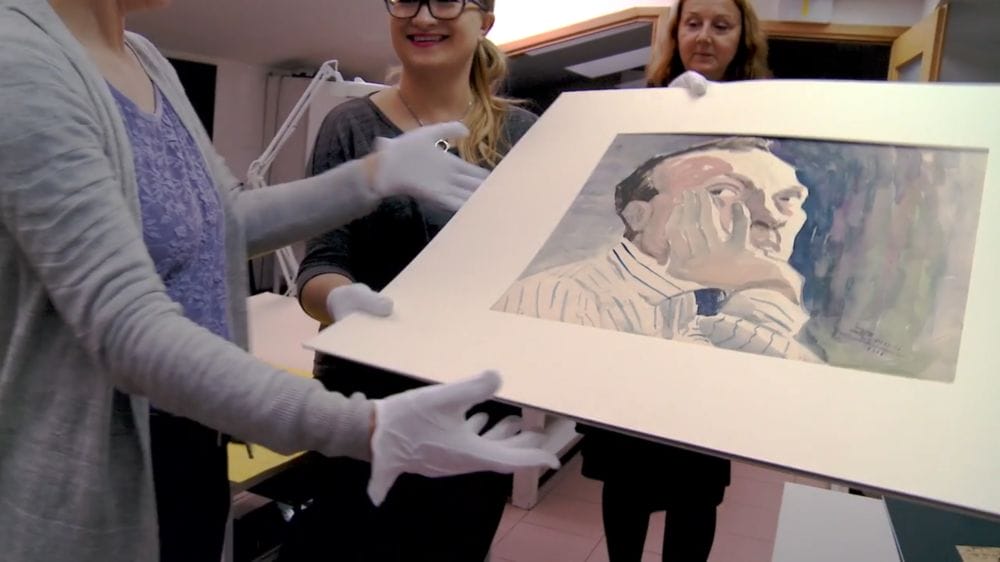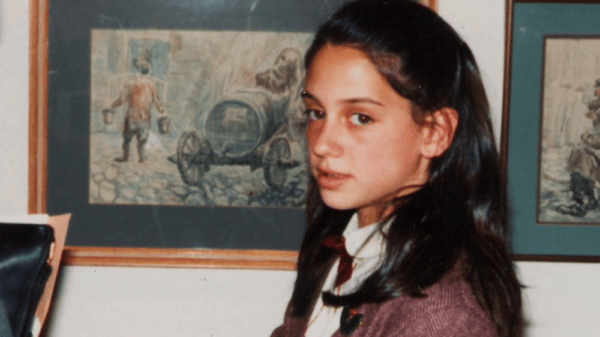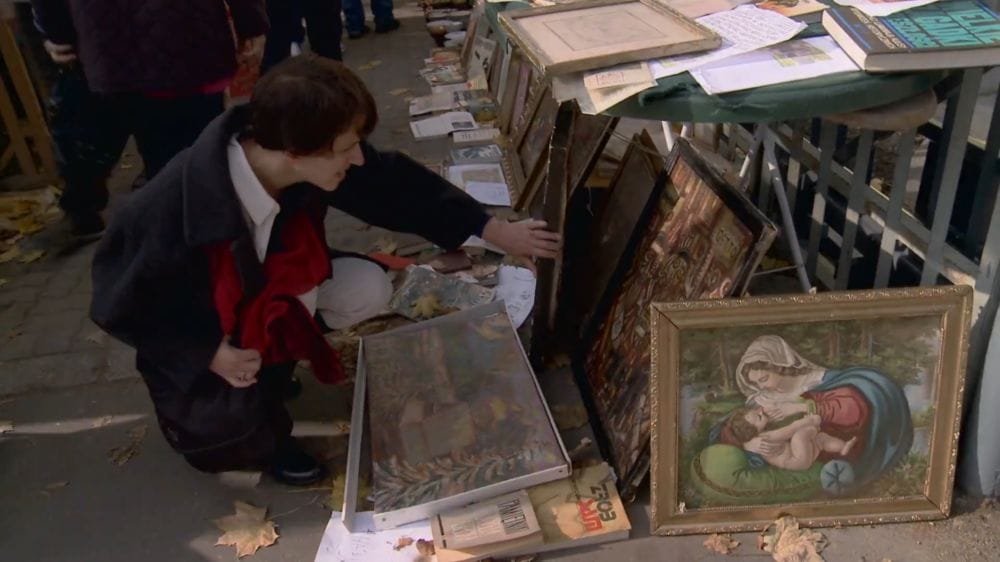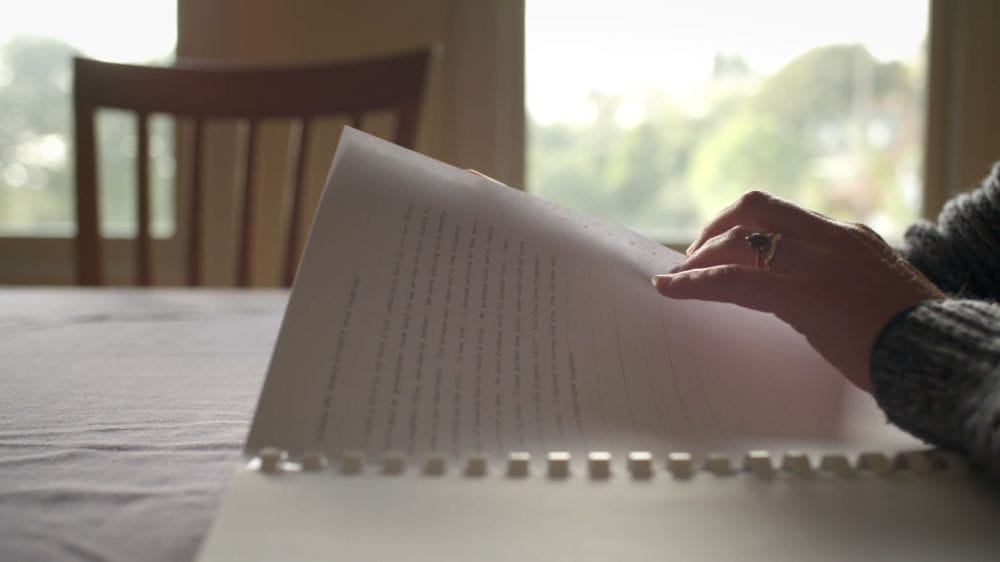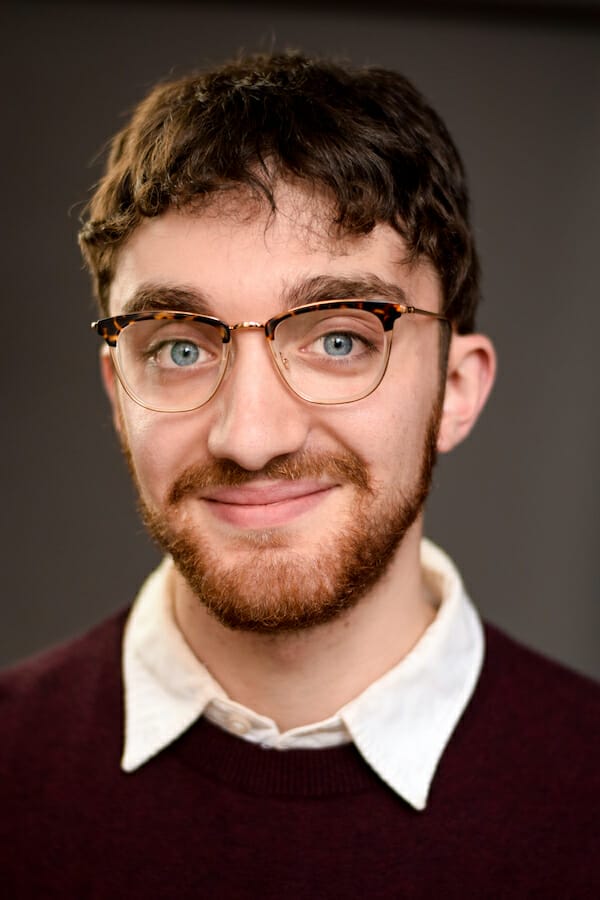Editor’s Note: Find more OVID.tv film reviews here.
The opening sequence of the documentary Chasing Portraits is shot on handheld camera. The action is Elizabeth Rynecki (herein Elizabeth) with her father Alex Rynecki, driving down a highway as they discuss Elizabeth’s upcoming trip to Poland. A Jewish family descended from people who escaped the Holocaust, none of the family has ever returned to Poland since leaving for the United States. However, Elizabeth has a new motivation to return: a quest to salvage, catalogue, and witness as many of her great-grandfather’s paintings as possible.
Moshe Rynecki (1881-1943) was a Polish artist who remained in the Warsaw ghetto during the war, eventually being moved to and later killed at Majdanek concentration camp. After his death, his wife returned to the city to salvage his paintings, which he had hidden with friends for safekeeping. While many were destroyed in the bombing of Warsaw, Rynecki’s wife was able to recover 120 paintings, bringing them back to the family.
This is where the documentary begins: Elizabeth and Alex, digging through boxes and boxes of original art from pre-war Poland, now housed unceremoniously in a suburban closet.
OVID.tv Documentary Aims To Find Restitution In Observation
“My legal case is weak, so there’s no guarantee my great-grandfather’s paintings would be returned,” Elizabeth realizes, after consulting legal advice regarding Rynecki’s art. After starting an online archive of his paintings, Elizabeth was contacted by collectors and curators from around the world, claiming to possess Rynecki works. “If I act as a historian, I might have a better chance of at least seeing the paintings,” Elizabeth explains in voiceover. “I tentatively decide to continue as a historian.”
The use of the word “tentative” in describing her course of action is revealing. Throughout the documentary, Elizabeth encounters her great-grandfather’s paintings in places both expected and unlikely, from the 52 works preserved in Warsaw’s Jewish Historical Institute to a single wooden carving velcroed to the wall of a distant friend’s home. Although she repeats the mantra that she has no intention of taking the paintings back with her, the framing of the documentary retains the tension that, even if Elizabeth doesn’t plan to take the paintings, she would prefer to. When the curator of the Jewish Historical Institute tells her that Rynecki’s paintings are “in the right place” under the museum’s care, the grief in her expression is unmissable.
The ownership of history is a major theme of Chasing Portraits. Frequent cutaways to conversations with her father Alex, or her son Tyler (whose favorite Rynecki painting, Luna Park, is a joyous carnival scene) drive home that the search for Rynecki paintings is as much about familial reclamation as it is about the diaspora education that works serve in museums. Israel’s Yad Vashem, an international museum of the Holocaust, acquired a Rynecki painting called Refugees in the 1990s. “There’s no other place in the world that gives the Holocaust such a...comprehensive stage,” says Yehudit Shendar, the curator who finalized the acquisition. “When I came to your family, I said, ‘it’s a chance...for your great-grandfather to be displayed in the museum, which tells the annals of his people which he opted to stay with.’”
CHASING PORTRAITS Shares The Discomfort That Comes From Lacking Closure
Structurally, Elizabeth’s documentary consists of short excursions to different locales where Rynecki paintings can be found. A particular thread running through the documentary concerns the Wertheim siblings. Their introduction comes when Moshe Wertheim, a Toronto-based collector, agrees to let Elizabeth see the four Rynecki paintings he owns. After telling the story of his parents purchasing the paintings in Poland just after the war, he connects Elizabeth to his brother, still living in Warsaw.
When Elizabeth meets with the brother, Alex Wertheim, the story he gives of the paintings’ acquisition doesn’t match up. It’s the first in a series of conflicts during the second half of Chasing Portraits that go unresolved. “While I desperately want to straighten it all out,” Elizabeth says of the discrepancy between the stories, “it seems impossible.” As more firsthand accounts of the Holocaust pass away, the story of how Rynecki’s art was scattered becomes harder to grasp.
Alex Wertheim does provide one more thread: a sister, who lives in Israel and has one more Rynecki painting in her possession. Without spoiling the end of Elizabeth’s documentary, the conclusion of this arc leaves her with similar unresolved tension. In this writer’s perspective, it’s this lack of resolution that defines Chasing Portraits. Much like Elizabeth herself, the audience is held in suspense, waiting for an emotional catharsis to rise from this trek through art history––a catharsis that never arrives. Elizabeth and her father attempt to record her grandfather’s memoirs of the Holocaust, but even reading the words proves too painful to continue.
Audiences searching for a hopeful story of a woman coming to peace with the aftershocks of the Holocaust won’t find such easy answers in Chasing Portraits. Rather, the ideal viewer is one willing to sit in the discomfort of knowing that Rynecki’s story will never be fully told. Elizabeth’s quest for answers may come up short, but to have documented the work at all is a defense against the erasure of history that the Holocaust aimed to achieve. Whether hanging in a museum or sequestered in a closet, the paintings tell the story of a time long forgotten, and a people unable to be silenced.
RECOMMENDED
Nominate this for The Picture This Post BEST OF 2020???
Click Readers' Choice
Vote Securely! Vote Privately! And Make Your Vote Count-- as all voting should be!!
Writer/Director: Elizabeth Rynecki
Producer/Story Development: Catherine Greenblatt
Director of Photography: Sławomir Grünberg
Editor: Tina Nguyen
Score: Matthias Zimmerman
For more information or to view this film, visit the OVID.tv webpage for CHASING PORTRAITS
Images courtesy of Ovid.tv.
About the Author:
Zach Barr (they/them) is a freelance director and writer based in the Chicagoland area. Their work has previously been featured by Newcity Stage, Scapi Magazine, and on their own blog The Hanslick Girls. Zach serves as the Literary Associate at Sideshow Theatre Company, and is a recurring participant in Chicago Dramatists’ Playwrights Aloud series. Find Zach Barr on social (@AdmiralZachBarr), or on their website.

